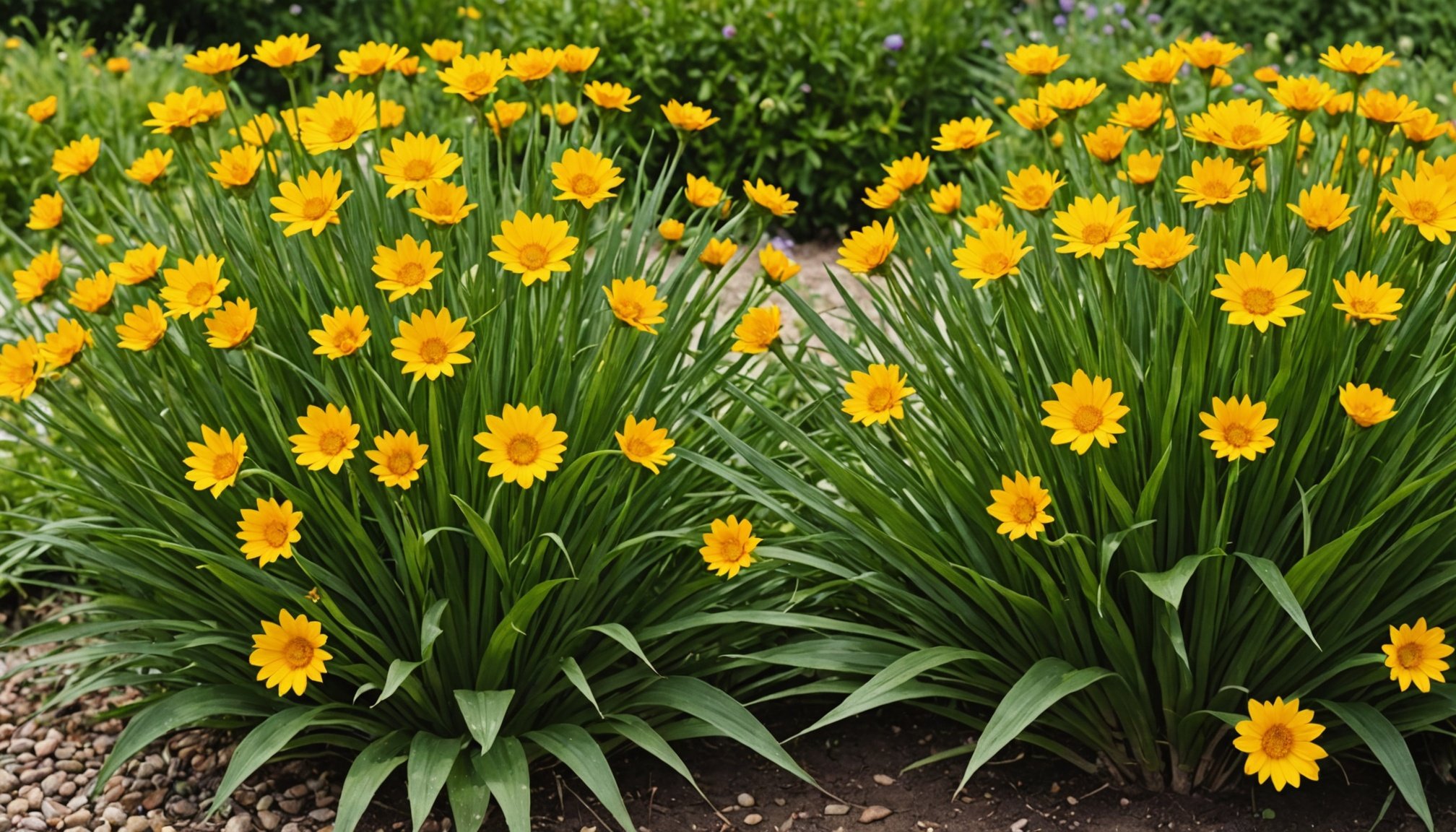Introduction to Drought-Resilient Gardening in the UK
Understanding the intricacies of Drought-Resilient Gardening is crucial for the UK’s ever-changing climate. Given the UK’s weather variability, choosing the right plants is essential. By selecting plants that thrive under drought conditions, gardeners can significantly reduce water usage, promoting environmental sustainability.
The UK Climate is unpredictable, often swinging from wet to dry spells. This variability presents a challenge for conventional gardening. Consequently, incorporating drought-resistant plants can ensure gardens remain lush and vibrant, even during extended dry periods. These plants are adapted to require less water without sacrificing their beauty or growth potential.
Also to see : Maximizing Solar Efficiency: The Best Panel Arrangement for Terraced Roofs in Reading
Water Conservation benefits greatly from using drought-resistant plants. Not only do they require minimal watering, but they also contribute to a healthier ecosystem by reducing the demand on local water supplies. This sustainable gardening approach helps in preserving vital water resources, making it a responsible choice for environmentally conscious gardeners.
By embracing Drought-Resilient Gardening, individuals can achieve a harmonious balance between aesthetic garden design and practical water conservation. Opting for plants that naturally resist drought conditions is an easy way for gardeners to enhance their gardens while addressing climate challenges. This thoughtful selection process is crucial to maintaining beautiful, sustainable spaces.
In the same genre : Fixing method using clips or rails: a practical guide
List of Top Drought-Resilient Plants
Exploring the fascinating world of drought-resilient plants offers exciting, sustainable opportunities for UK garden enthusiasts. These plants provide not only water-saving benefits but also add unique charm to your garden design.
Plant 1: Lavender
Lavender is cherished for its aromatic fragrance and purple blooms. This plant thrives in well-drained soil under full sun, ideal for dry climates. Its minimal water requirements and resistance to pests make it a favourite among gardeners. Beyond aesthetics, Lavender is excellent for attracting pollinators like bees, enhancing biodiversity in your garden.
Plant 2: Sedum
Sedum, also known as stonecrop, is renowned for its adaptability and low maintenance. With a variety of species to choose from, Sedum offers colourful foliage and clusters of star-shaped flowers. It excels in rock gardens and as ground cover, thanks to its ability to store water in its succulent leaves, making it perfect for UK drought conditions.
Plant 3: Echinacea
Echinacea, often called coneflower, stands out for its resilience and vibrant petals. Blooming from early summer to late autumn, it provides lasting colour and attracts beneficial insects. For optimal growth, plant Echinacea in well-drained soil under full to partial sun. This enduring plant requires minimal care, making it an excellent choice for low-water environments.
Climate Considerations and Soil Types
When considering drought-resilient gardening in the UK, understanding the UK Climate and varying soil types is paramount. The UK experiences a unique climate, with frequent shifts between wet and dry periods, which can heavily influence which plants are suitable for your garden.
Different regions in the UK can present diverse microclimates, ranging from humid coastal areas to drier inland stretches. These variations necessitate tailored plant choices to ensure a robust and thriving garden. For instance, plants that fare well in Scotland’s cooler, wetter climate might not be ideal for the more temperate conditions in southern England.
In terms of soil types, the UK’s soil is incredibly varied; from loamy to clay-heavy soils, each presents specific challenges and opportunities for drought-resilient planting. Loamy soil, well-known for its fertility and ease of workability, can be ideal for many drought-resilient plants, whereas clay soil, being denser, may require strategic amendments to improve drainage.
Successfully navigating these climate adaptation strategies involves not only selecting the right plants but also understanding and working with the existing soil and microclimates in your garden. This alignment enhances plant vitality and can significantly boost your garden’s ability to withstand drought conditions.
Tips for Incorporating Drought-Resilient Plants
Designing a drought-friendly garden involves a thoughtful fusion of creativity and practicality. Garden Design Tips are essential for creating a visually appealing garden that can withstand dry conditions. By employing plant pairing strategies, gardeners can optimize spaces by grouping species with similar water and sunlight needs. This not only enhances plant health but also contributes to the overall aesthetic.
Companion plants play a pivotal role in supporting drought-resistant species. For instance, pairing Lavender with Rosemary not only maintains a cohesive visual theme but also ensures both thrive in reduced water environments. Similarly, Sedum can be effectively combined with ornamental grasses to create textured layers, adding depth to garden layouts.
Water-Saving Techniques are crucial to bolster plant longevity. Implementing rainwater harvesting or utilizing mulch can significantly reduce water evaporation, providing moisture retention for the plants. A targeted watering schedule, focused on early morning or late afternoon, ensures plants receive adequate hydration without waste.
Incorporating these elements into your garden design not only emphasizes sustainability but also enhances the resilience and beauty of your outdoor space. By creatively utilizing garden design tips, pairing plants effectively, and embracing water-saving techniques, gardeners can create vibrant, drought-resilient gardens that thrive year-round.
Sourcing Drought-Resilient Plants for Your Garden
Sourcing drought-resilient plants is crucial for achieving a robust and sustainable garden in the UK. Local nurseries provide an array of options tailored to the UK’s unique climate, offering expert guidance for optimal plant selection. Prioritizing nurseries with a focus on native species ensures that purchased plants are better adapted to the British environment, enhancing their resilience.
Online resources are a valuable addition to your sourcing efforts. Websites like the Royal Horticultural Society can provide comprehensive lists of suitable plants while also offering care tips and garden design inspiration. Engaging with online garden communities can also widen your network, giving access to shared experiences and recommendations from enthusiasts focusing on water conservation and sustainability.
When purchasing plants, inspect root health, foliage condition, and overall plant vitality. Choose species with established drought tolerance to ensure longevity in your garden. It’s beneficial to understand the suppliers’ approaches to sustainability—are they using eco-friendly practices in cultivation?
Always consider transportation and planting schedules to reduce transplant shock and maximize plant resilience. Engage with local experts to discuss plant sourcing strategies. This helps ensure your drought-resilient garden thrives and contributes positively to local ecosystems. By sourcing wisely, you can create a garden that remains beautiful in spite of the UK’s fluctuating climate.











